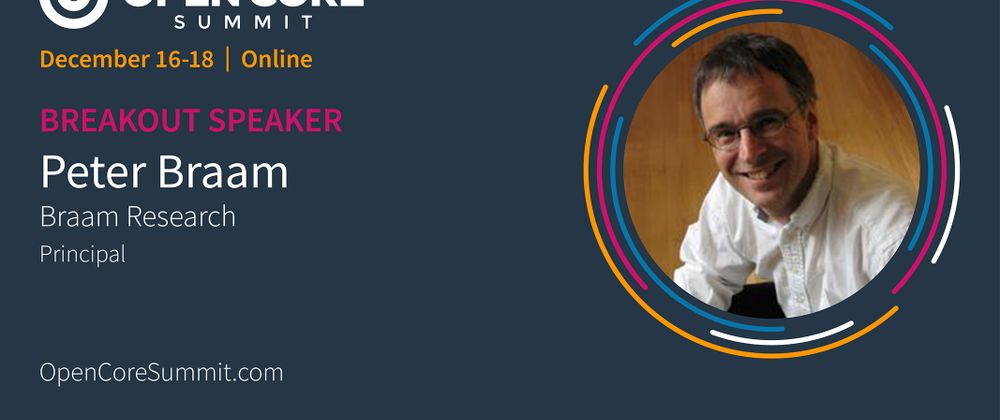Dr. Peter Braam is a multidisciplinary innovator covering computing, data and science. Research organizations, governments and enterprises engage with him to create concrete, focused visions and co-design solutions. As a recognized global leader in computing, without fear to be wrong or incomplete, he thinks systematically to advance technology frontiers.
Relevant Links
LinkedIn - Twitter - Wikipedia
JJ interviews one of the towering figures in fundamental software storage innovation, the creator of Lustre and many parallel file storage technologies.
(JJ gives detailed background on Peter’s career) - 0:19
What drew you to the problem space of storage systems in general? How did you come into that world? And how did you become familiar with free software and open source? - 2:14
You transitioned from a technologist/programmer to become an entrepreneur and building companies? How did you connect those two career paths? Was it a natural progression? - 7:15
When you were talking about the early, almost accidental, design and inspiration for creating Lustre… you trap yourself in the library for a few days, you come out, you have these interesting observations. Was that as part of Stelias (a short lived company Peter started in late 90s) or as you were starting Mountain View Data… when did that occur? - 13:35
There were lots of things happening in the late 90s and early 2000s… most people remember this as the years of the dotcom bubble, internet companies, lots of VC dollars going up in flames. However, there were some really incredible companies that ended up being very durable, that became pillars of the industry. Red Hat was one of them. (JJ gives a bit of Red Hat history). How did the journey with Turbolinux unfold? You sold Stelias to Turbolinux… Can you give us some history and observations from this Turbolinux phase? - 15:39
Well, correct me if I’m wrong, you basically funded the company (Cluster File Systems) through this Department of Energy RFP that you won… and that money allowed you to grow your business and hire more engineers. Is that correct? - 24:35
Talk about your transition from Cluster File Systems to Sun Microsystems. What was that like? - 30:07
Xyratex is the company that acquired ClusterStor, and Xyratex was then acquired by Seagate a few years later. Right? - 36:42
You were saying… Your technology ClusterStor was made proprietary by Xyratex, and then Seagate acquired Xyratex. Just a couple of months ago, very recently, Seagate open sourced CORTX… is this the correct repo I’m looking at? -37:04
During your work with Xyratex (2010-13), you also started a company called Parallel Scientific, which evolved into Docsforce (a short lived cloud and mobile project). Tell us about Parallel Scientific and Docsforce. - 38:26
I wanted to ask you something about the complexity and intricacy of engineering design…
You built multiple successful open source storage technologies. How much of the input into the engineering design came from the open source community, as opposed to from the upfront knowledge of what to build. What do you think about tradeoffs in that? - 42:33
What are the software layer factors behind dramatic improvements, like in the last 20 years, in distributed storage technology? -47:12
What are the technological limitations that need to be addressed to make something like peer-to-peer NFS possible? The reason I’m asking this is, we seen this big wave of cryptocurrency/blockchain promising a vision of fully decentralized personal storage. First question, is this possible or is it a pipe dream? Second question, if it is possible, it seems it isn’t possible yet. What would be needed in order to make that possible? - 53:31
(In response to Peter discussing innovation opportunities in storage) We have things like Ceph which are sort of block-, object- and file-level storage, so it seems that some of the primitives are there… Are you referring to all the different types of data, time series, structured vs unstructured, relational vs non-relational, or are you thinking there is a new domain that open source has yet to touch? - 59:04
What are you working on right now? What piques your interest? I’ve been watching some of your videos recently, and it looks like you are really getting into ML and other types of optimization problems. - 1:00:50
Here’s my last question for you. You have a deep background in physics and math, also programming and computer science. What have been the most rewarding sources of inspiration that you can kind of cross pollinate from, in terms of ideas from the math world and the physics world, applying them to solve important storage tech problems? Is it equal parts math and physics? - 1:03:10
Share your questions and comments below!



Top comments (0)